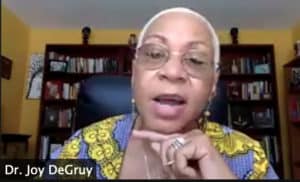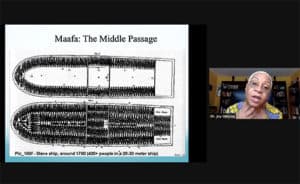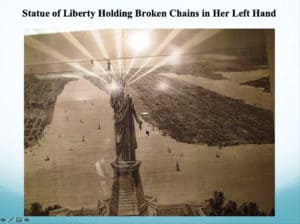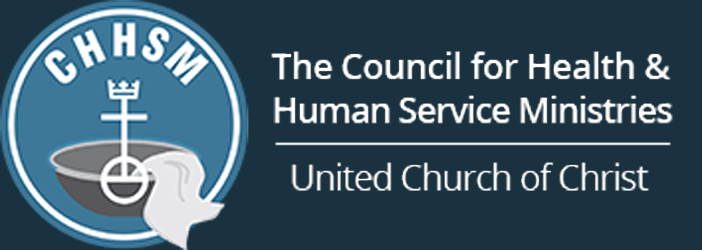Valerie Russell Lecturer DeGruy Emphasizes Persistent Truth-Telling in Struggle to Heal the Injuries of Past and Current Racism

Internationally renowned researcher and educator Dr. Joy DeGruy brought her message of uncovering racism and unleashing repair to delegates and visitors at the UCC’s virtual General Synod 33. DeGruy delivered the Valerie Russell Lecture Saturday, July 17, at 11:30 a.m.
Sponsored by CHHSM and the UCC’s Justice and Local Church Ministries (JLCM), the lecture honors visionary lay leader and justice advocate Valerie E. Russell, former executive director of the UCC’s Office for Church in Society. Russell died unexpectedly in 1997 at age 55. The Valerie Russell Scholarship and Lecture series celebrates Russell’s work to empower and nurture future lay leaders of the church.
In introducing the lecture, the Rev. Traci Blackmon, associate general minister for the UCC’s Justice and Local Church Ministries, praised the new partnerships that have grown up over the past year, particularly between JLCM, CHHSM, and the UCC Council for Racial and Ethnic Ministries (COREM). Blackmon also lifted up Russell’s ministry and gifts as a lay leader, and her role in nurturing future lay leaders of the church. “I think that faith is only real when it’s shaped out of every generation’s struggle,” Russell once said. “Every time has to redefine the moral imperative and what the gospel has to say to meet the challenges of that age.”
After Blackmon’s introduction and an opening prayer from Michael J. Readinger, president and CEO of CHHSM, DeGruy greeted virtual attendees with thanks that set the tone for her lecture.
“It is so refreshing to begin with prayer,” DeGruy, a member of the Baha’i faith, said. “There are so many spaces where we can’t do that. I appreciate that I can exhale, that I can bring the only answer I believe there is [in dealing with systemic racism and white supremacy] — spiritual. If we can’t change our hearts, none of the rest matters.”
DeGruy’s talk focused on some of the major points from her seminal book, Post Traumatic Slave Syndrome — America’s Legacy of Enduring Injury and Healing, which addresses the residual impacts of trauma on African descendants in the Americas. Key to healing, she said, is truth-telling, and the need is urgent. She used the analogy of a homeowner, referencing Isabel Wilkerson’s Caste: The Origins of our Discontent.
“We in the developed world are like homeowners,” DeGruy said. “Sometimes when you’re trying to fix something, [it just needs to be cleaned up, or one part needs repair]. Sometimes you have to take down the structure. Sometimes you have to rebuild.”
“We have to decide, as humanity, what to do with this house,” she added. “We are on the precipice,” with little time left to deal with the systemic and cultural white supremacy and racism inherent in all of our social systems.
The current crisis point has been exacerbated by the truth about population, she said. DeGruy cited current statistics: 7.8 billion people on the planet, with 59.5 percent Asian, 16.9 percent African, 9.7 percent European, 8.6 percent Latin American, 4.8 percent North American, and .5 percent Oceanic.
“These numbers should not create problems, but for some people they do,” she said. “[They] create a pathological fear” in people of European descent.
There currently are 31 megacities in the world with at least 10 million people, she continued, and there will be 10 more added to that list in the next decade. As of January 2021, no European or U.S. city is in the top 10. “This is what has reawakened white supremacy in North America,” DeGruy said.

Most impactful during DeGruy’s lecture were her stories of personal experience and historical facts regarding the U.S. Constitution and slavery in the United States. The Constitution’s emphasis on freedom and democracy is its first great contradiction, she said, resulting in cognitive dissonance among people living in the United States — including white people.
“How did people reconcile … [the genocide of native peoples and African chattel slavery] in their Christian minds?” she asked. “Every institution has its roots in white supremacy. Every religion and institution had to be complicit and co-sign it.”
The cognitive dissonance was — and continues to be — resolved by changing the narrative, she said: by justifying the behavior and relabeling people to fit the behavior, as in defining Blacks in a way that made chattel slavery reasonable and justified in the minds of the white land owners creating the Constitution.
Similarly, the current U.S. prison system problem has been created by “a destruction of people’s culture,” DeGruy said. “In that way, you destroy the person, the identity, the self.”
The way forward, DeGruy said, is telling the truth, about U.S. and world history, and about current society and its institutions. Though difficult to begin — “we tend to go out kicking and screaming when it comes to change,” she said — truth telling actually is easier in the long run, and is front and center to our healing.
“When you tell the truth, you don’t have to keep up with it,” she said. “if you tell a lie, you have to keep up with it, and everybody has to know the lie so that you don’t get found out. But when you tell the truth, you don’t [need all of that].”
“America’s pathology is her denial. It is her secrets that make her sick,” DeGruy said. “Everybody had their hands and fingers in slavery. We have to look at that, how to undo that injury.”

As example, DeGruy told her personal story of confronting officials on a hidden truth of the Statue of Liberty. The sculptor, Frédéric-August Bartholdi, originally conceived the statue with broken chains in Lady Liberty’s left hand to celebrate the end of slavery. U.S. officials refused to allow it, but Bartholdi insisted. A compromise was reached and the chains were hidden at the feet of the statue.
The real story became part of the official narrative only after DeGruy told the story in all of her lectures and challenged officials to tell the truth: a truth “hidden in plain sight,” she said. DeGruy eventually was invited by the U.S. Department of Interior to train the rangers who provide guided tours of the statue. A photo of the statue’s original design is now displayed prominently, along with a statement released in 2019, “Lady Liberty was originally designed to celebrate the end of slavery, not the arrival of immigrants.”
The lecture cited many examples geared toward giving attendees a foundation from which to begin the process of transformative healing. During the Q-and-A session following the lecture, DeGruy emphasized the importance of women and faith communities in the healing process.
“Women and faith communities are critical for peace,” she said. “My focus is on children and youth — healing via work with children and youth. When people know better, they can do better. We need to stop injuring folks — the ones we are going to hand the baton to.”
In order to help heal the young people who will grow into our leaders, UCC churches must be committed to transforming themselves and their larger communities. This is done, DeGruy said, by holding themselves accountable, and holding their community partners accountable as well.
“Everyone has a role to play in this,” she added. “We must become transparent about it, and no one has a better opportunity than the faith community” to lead this effort.
One attendee asked specifically what predominantly white churches can do to begin the process. In response, DeGruy recounted a story of an African-American woman who scaled a pole to take down a confederate flag. When the local authorities threatened to electrify the pole in order to force her to climb down, a white man protected her from being electrocuted by running up and hugging the pole.
“We need you to hug the pole,” DeGruy said, and not give anti-racism lip service only.
“If we don’t deal with this issue, there will not be an America,” added DeGruy. “There are people who would rather tear this country down than share it. … You need to show up and hug the pole. In those circles where we can’t be, you CAN be … and we need you to be.”
Following the session, Blackmon thanked DeGruy, saying “The more we know, the more we can do. Perhaps the biggest challenge has been that we don’t know. The foundation you have laid today was necessary for us to do anything else.”
In a closing prayer to send attendees forth, Readinger said, “Thank God for the collective wisdom of all who are present here, for the grace to learn painful lessons, for the hope that we can be the arms, hands, feet and legs to provide for healing in this world. The lessons of today will result in the actions of tomorrow.”
Those interested in applying for the Valerie Russell Scholarship for African-American Lay Women should contact Justice and Local Church Ministries for more information. Learn more on the UCC’s Leadership Development Scholarships page.
Join Our Mailing LIst
"*" indicates required fields
Follow on Facebook
Pension Boards appoints David A. Klassen as its President, CEO - United Church of Christ
www.ucc.org
The Pension Boards, an affiliated ministry of the United Church of Christ recently announced its appointment of David A. Klassen as its next President and